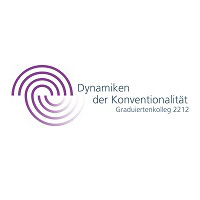Accounting practices in the Middle Ages. Comparison of account books of monasteries and noble courts, cities and counting houses
Books of accounting have been handed down in German-speaking countries since the 13th century. They are categorized according to their place of origin as monastic, aristocratic, municipal, and commercial account books. However, it is striking that account books from different contexts of origin resemble each other, which raises the question of conventionalized practices of bookkeeping that were apparently followed by actors from different contexts. The project addresses the question of these conventionalized practices of written accounting. Using a praxeological approach, the rules of written action of different actors in monastic and aristocratic, urban and commercial economic administration are examined in comparison. It will be shown that accounting moved between routine and innovation and that its conventionalized functioning was an expression of a set of relationships determined by dependence and/or power.
Representative samples from the four different contexts of origin (monastery and court, city and office) are selected and evaluated. The results obtained in this way are tested for reliability and representativity according to the micro-exemplary method by comparison with the results from comparable studies. The account books are subjected to both a content-based and a material-scientific examination. This is followed by the elaboration of higher-level conventionalized practices that lie behind the actions of individuals. The approach thus combines theoretical considerations on conventionalized practices and on "material culture".
The aim of the project is to reveal the conventionalized practices of accounting. The new typology of medieval accountancy that is being developed does not focus on the place of origin, but takes into account the design of the written accounts, the concrete situation in which they were created, and their functions within administrative action. I am currently working on this project as part of my postdoctoral position in Research Training Group 2212 "Dynamics of Conventionality (400-1550)" and am preparing an extensive paper.
Preliminary work:
Publications:
[in collaboration with Markus Jansen, Adrian Meyer and Tristan Spillmann]: Konventionen als Regulativ der Schriftlichkeit. Vier Skizzen [in preparation].
Die Kunst, Daten in Informationen umzuwandeln. Zur Auswertung eines zisterziensischen Rechnungsbuchs aus dem 13. und 14. Jahrhundert und den Herausforderungen in der Analyse serieller Wirtschaftsquellen, in: Gudrun Gleba, Niels Petersen (Hgg.): Wirtschafts- und Rechnungsbücher des Mittelalters und der Frühen Neuzeit: Formen und Methoden der Rechnungslegung: Städte, Klöster und Kaufleute, Göttingen 2015, S. 13–44.
Die Zisterze Kaisheim und ihre Tochterklöster. Studien zur Organisation und zum Wirtschaften spätmittelalterlicher Frauenklöster mit einer Edition des „Kaisheimer Rechnungsbuches“ (Vita regularis. Editionen 5), LIT-Verlag: Berlin [u.a.] 2013.
Presentations:
11/2021
„Accounting Practices in Monasteries, Towns and Courts. Methodological Reflections“, at a workshop of the project „Finance, law and the language of governmental practice in late medieval towns: Aberdeen and Augsburg in comparison“ (FLAG), of the Universities of Mainz and Aberdeen.
